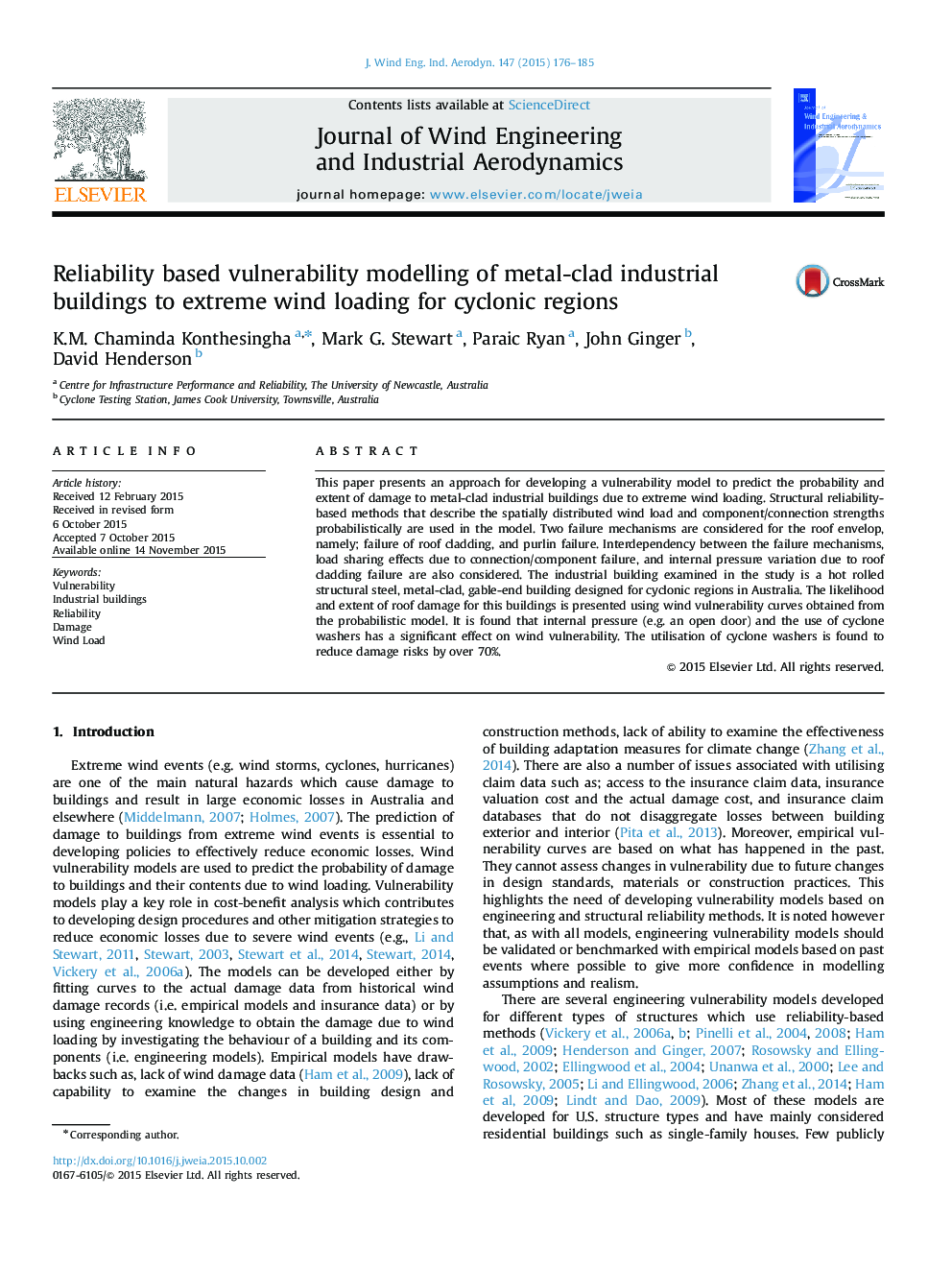| Article ID | Journal | Published Year | Pages | File Type |
|---|---|---|---|---|
| 6757418 | Journal of Wind Engineering and Industrial Aerodynamics | 2015 | 10 Pages |
Abstract
This paper presents an approach for developing a vulnerability model to predict the probability and extent of damage to metal-clad industrial buildings due to extreme wind loading. Structural reliability-based methods that describe the spatially distributed wind load and component/connection strengths probabilistically are used in the model. Two failure mechanisms are considered for the roof envelop, namely; failure of roof cladding, and purlin failure. Interdependency between the failure mechanisms, load sharing effects due to connection/component failure, and internal pressure variation due to roof cladding failure are also considered. The industrial building examined in the study is a hot rolled structural steel, metal-clad, gable-end building designed for cyclonic regions in Australia. The likelihood and extent of roof damage for this buildings is presented using wind vulnerability curves obtained from the probabilistic model. It is found that internal pressure (e.g. an open door) and the use of cyclone washers has a significant effect on wind vulnerability. The utilisation of cyclone washers is found to reduce damage risks by over 70%.
Related Topics
Physical Sciences and Engineering
Energy
Renewable Energy, Sustainability and the Environment
Authors
K.M. Chaminda Konthesingha, Mark G. Stewart, Paraic Ryan, John Ginger, David Henderson,
